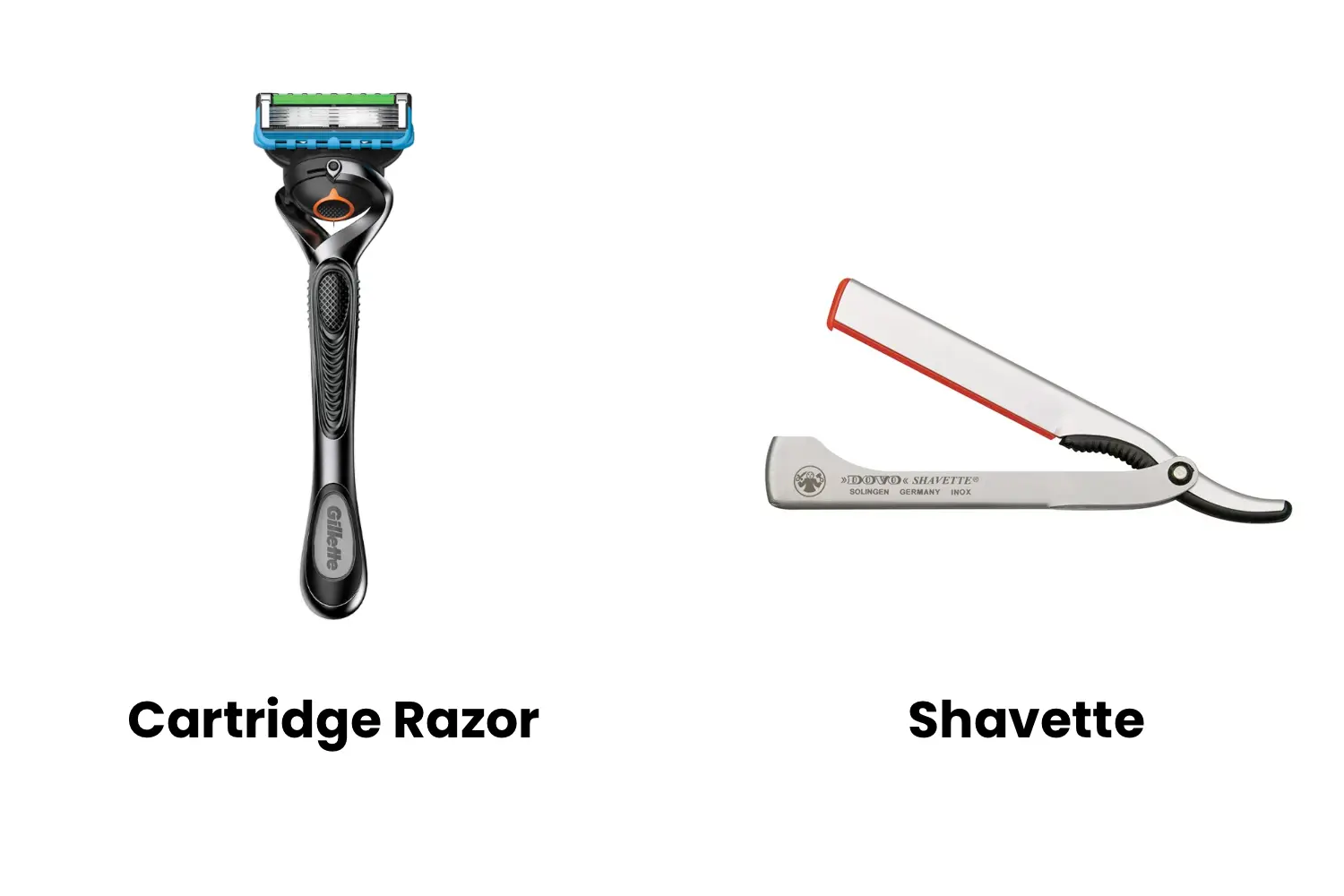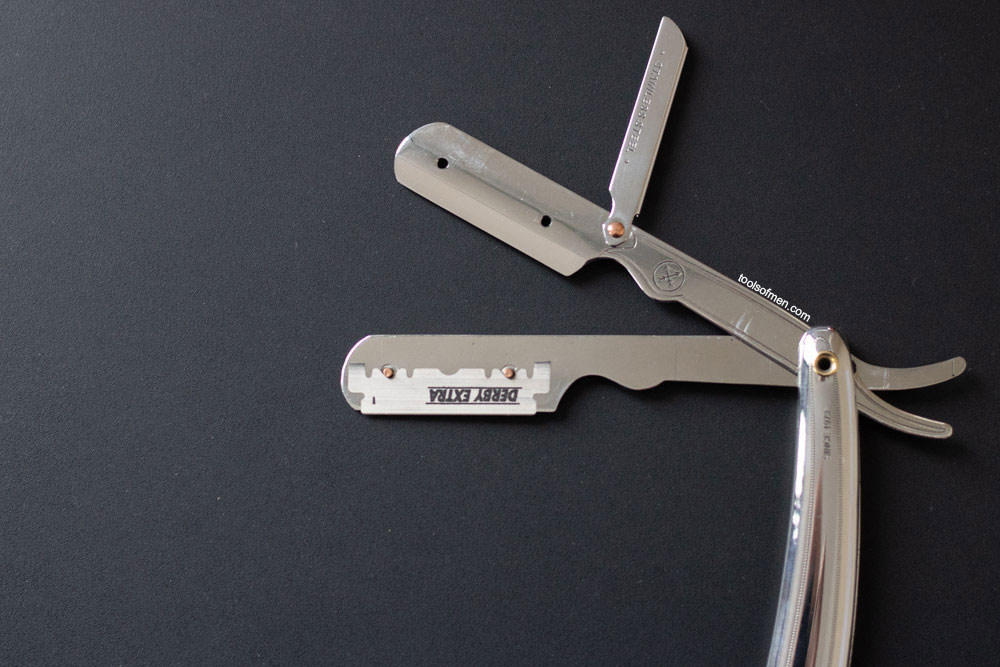Choosing between a shavette and a cartridge razor can be an arduous task, especially if you’re unfamiliar with the way they work.
However, these two shaving tools are worlds apart in terms of their design, functionality, and the shaving experience they offer.
A shavette, often referred to as a straight razor (although a straight razor is entirely different from a shavette), has a single, long blade that can be replaced while cartridge razors typically consist of multiple blades mounted on a pivoting head that attaches to a reusable handle.
Here are the key differences between shavettes and cartridge razors:
| Feature | Shavette (Straight Razor) | Cartridge Razor |
|---|---|---|
| Ease of use | Requires skill and technique | Easy to use, no learning curve |
| Safety | Risk of cuts and nicks, needs cautious handling | Safer, less likely to cut skin |
| Blade sharpness | Extremely sharp | Less sharp than a shavette |
| Sustainability | No plastic and sustainable design | Plastic cartridges generate waste |
| Blade longevity | Requires frequent blade replacement | Lasts longer before blade replacement |
| Ingrown hairs | Less likely to cause ingrown hairs | Could cause ingrown hairs due to multi-blade design |
| Shave closeness | Cuts to skin’s surface | Cuts slightly below skin’s surface |
Safety: Which is Safer – A Shavette or a Cartridge Razor?

When it comes to safety, cartridge razors are generally considered the safer option. They’re designed with safety features such as skin guards, lubrication strips, and flexible heads that adjust to the contours of your face, thus reducing the risk of cuts and nicks.
There is a reason that cartridge razors are a teenager’s first razor. They are easy to use, very forgiving, and can be used with little to no technique.
Shavettes, on the other hand, are more likely to cause cuts due to their highly sharp exposed blade. Users require learning how to hold the blade at the proper angle (30 to 45 degrees), maintain the right pressure, and avoid going against the grain of their hair growth to achieve a cut-free and smooth shave.
Related: View all the Different Types of Razors
Blade Sharpness and Shave Closeness

Both razor systems feature incredibly sharp blades. There is a misnomer that shavettes are sharper; however, this is not true. Where the difference lies between these two razor systems is the number of blades that are used. Shavettes do not experience hysteresis, also known as ‘lift-and-cut’. Hysteresis, a common feature in multi-blade cartridge razors, works in such a way that the first blade lifts the hair while the subsequent blades cut it, allowing the hair to retract below the skin surface. This is how cartridge razors manage to provide a very close shave.
However, this perceived advantage comes with a caveat. While the ‘lift-and-cut’ technique gives a close shave, it often leads to more skin irritation and a higher likelihood of causing ingrown hairs. This is because the hair, once cut and retracted beneath the skin, might not grow back out as it normally would and instead curl back into the skin, resulting in painful and unsightly bumps.
Sustainability and Blade Longevity
Comparing the lifespan of shavette and cartridge razors, cartridge razors tend to outlast shavettes as they do not require as frequent blade replacements. While it is hard to say definitively how long a blade will last, broadly speaking, a single cartridge razor blade can last anywhere from one week to a month depending on use and maintenance, while a shavette blade might need replacing after every few shaves.
Despite this, shavettes are far more sustainable as they generate less waste. The blades are easily recyclable, and they don’t have plastic cartridges that contribute to landfill waste. If sustainability is a significant factor in your decision, a shavette would be the more eco-friendly choice.
The Bottom Line
The choice between using a shavette or a cartridge razor isn’t just about the shave itself but also about the experience and broader implications, such as sustainability and skin health.
For novices or those in a rush, a cartridge razor is often the safest and most convenient option. It’s easy to use and provides a close shave with less risk of cuts or nicks. However, its tendency to cause ingrown hairs and its environmental impact due to disposable plastic cartridges might be concerning for some.
A shavette provides a more refined, traditional shaving experience. It requires skill and patience, but the end result can be incredibly rewarding – a super close shave without the risk of ingrown hairs. Plus, it’s an environmentally friendly choice, with easily recyclable blades and no plastic waste. However, the shavette’s steep learning curve and the potential for cuts and nicks might deter those who prefer simplicity and safety in their shaving routine.